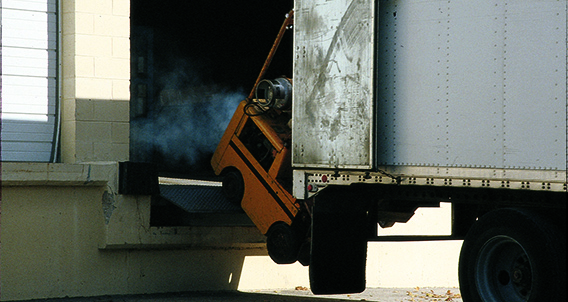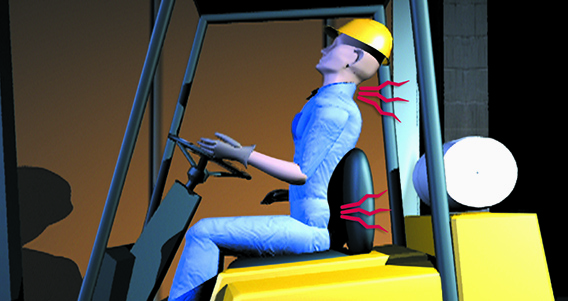Global Wheel-Lok
View
Someone from our team will be in touch with you shortly.
Dangerous loading dock separation accidents can occur in many different ways.


FACTS: Every year, several hundred thousand forklift related injuries are reported. 7% of forklift accidents occur when a lift truck is driven off a loading dock. 70% of all reported accidents could have been avoided with proper safety precautions. With high volumes of traffic in the loading area it is paramount that every precaution is taken to provide a safe work environment. Vehicles should be restrained during loading/unloading, trailers should be prevented from upending or falling over and open doors that are not in use should be cordoned off.
Trailer Creep, also known as dock walk, is the repeated impact from lift trucks going in and out, that causes the trailer to edge (“creep”) away from the dock. Wheel chocks don’t do the job because they slip, get misplaced, can be pushed or pulled out of the way, and require a human to put them in place.
Early Departure or aggressive pullout is when a truck driver mistakenly drives away while a lift truck is entering, leaving or still inside the trailer.
Trailer Pop-Up or Trailer Up-Ending can happen as loading or unloading takes place and the weight of the product and the forklift cause the trailer to shift at the end or nose.
Landing Gear Collapse, known as trailer tip over, occurs when the leg of the landing gear of a spotted trailer collapses. If the leg rolls inward or outward, it causes the trailer to tip sideways. Utilizing a rotating hook vehicle restraint to hold the trailer can keep it from toppling over into the trailer spotted at the dock position next to it.
The Rite Solution.
Lock vehicles during loading/unloading to the loading dock
Wheel chocks may seem like a cost-saving alternative. But they are not recommended as a way to prevent trailer movement at the dock, due to their safety limitations. The Global Wheel-Lok truck restraint from Rite-Hite is a rugged and proven restraint system that has been used on European loading docks since 1997. Easy to install, this surface-mounted device is fitted directly in front of the dock opening. It measures the rear wheel of the trailer and engages with a barrier that locks in place and prevents the vehicle from moving forward when parked at the dock. The restraint protects against early departure, trailer creep and dock walk. As a positive mechanical lock once it’s locked it stays locked, if power to the dock is disturbed your lock is still in place and your staff safe. Pullout resistance, the energy required for a trailer to pull over the barrier, is in excess of 142 kN. Even when the trailer is empty, the restraint will effectively prevent the vehicle from pulling away from the dock.
The use of an automatic communication system eliminates communication breakdowns associated with chocks. The system provides clear, constant communication to the vehicle driver and the forklift driver when entering and exiting the trailer, which is essential to safety at the loading dock.
The Global Wheel-Lok works effectively in all weather conditions and does not rely on photocells or radar for its activation giving constant service in wet and snowy conditions
Cordon off hazardous areas with safety barriers
Vacant loading docks create a dangerous drop of more than one metre. The Dok-Guardian safety barrier effectively barricades this opening, preventing dock personnel – and in particular those driving fork lift trucks – from falling over the edge. The Dok-Guardian Safety Barrier from Rite-Hite will effectively stop a 4500 kg forklift truck moving at speeds of up to 6.5 km/h, protecting both a business' employees and equipment.
Pulled manually across vacant docks, the Dok-Guardian is a simple, easy-to-use safety barrier. The barrier itself is made of PVC-coated fibreglass mesh, bound with highly visible bright yellow, heavy-duty, polyester restraint straps. When not in use, the safety barrier retracts inside steel wardens, which also serve to protect the door tracks from being knocked and damaged.
Provide additional support to worn landing gear
A poorly supported spotted trailer can collapse with a fork-lift truck and driver inside, creating a hazardous situation; Spotted trailers can tip due to the weight shift when a fork-lift truck enters and landing gear that is seldom used or rusted may collapse under extreme weight conditions. With a static load capacity of 227 kN, the TS-2000 trailer stand from Rite-Hite can be used to avoid these hazardous situations.

Fill out the form below and one of our reps will reach out to you.
Someone from our team will be in touch with you shortly.